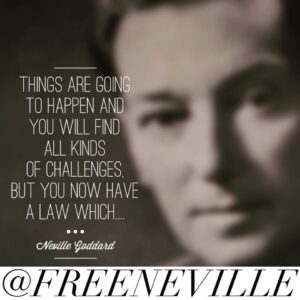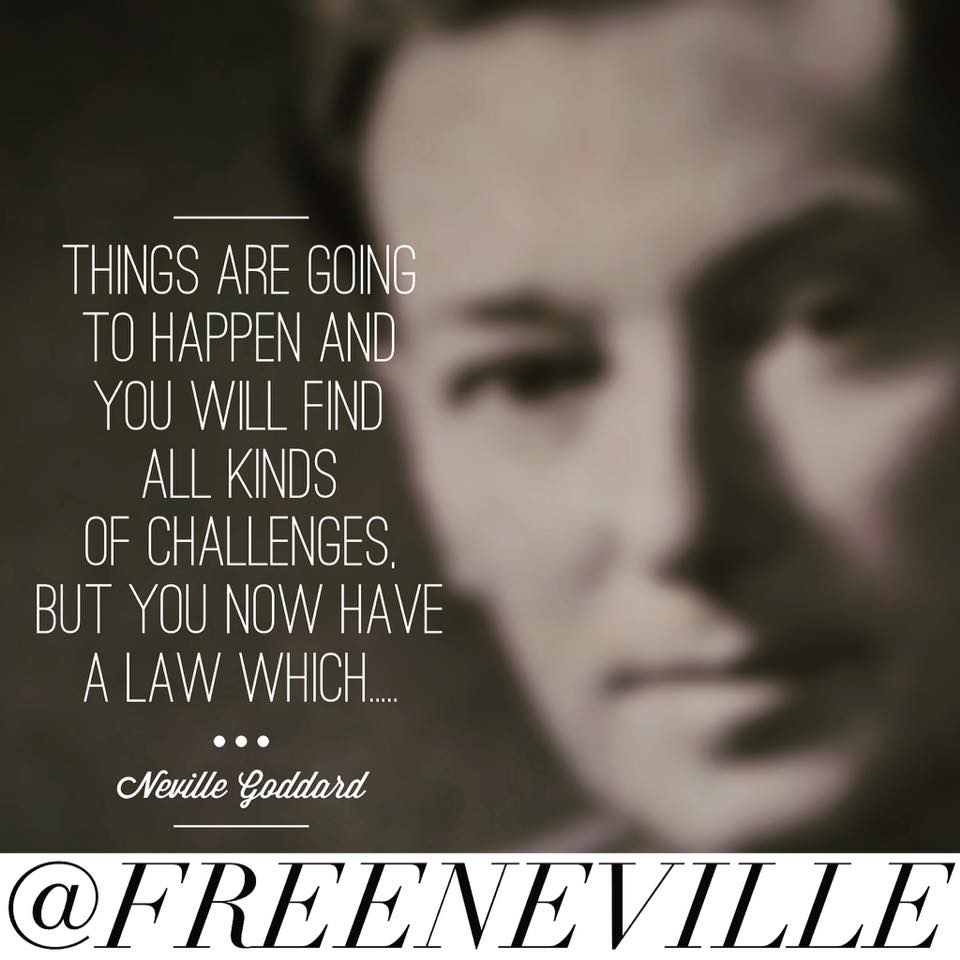 Neville Goddard WikiPedia Page.
Neville Goddard WikiPedia Page.
Neville Lancelot Goddard (1905-1972) was a prophet, profoundly influential teacher, and author. He did not associate himself as a metaphysician, with any ‘ism’ or ‘New Thought’ teaching as commonly advertised by these collective groups. Goddard was sent to illustrate the teachings of psychological truth intended in the Biblical teachings, and restore awareness of meaning to what the ancients intended to tell the world. [1]
Contents
* 1 Biography
* 1.1 Abdullah
* 1.2 Lectures
* 1.3 The Promise and The Law
* 2 References
* 3 External links
Neville Goddard’s Biography
Neville Goddard was born on 19 February 1905 in St. Michael, Barbados in the British West Indies, to Joseph Nathaniel Goddard,[2][3] a merchant, and Wilhelmina Nee Hinkinson.[4][5]Neville was the fourth child in a family of nine boys and one girl.
In 1922 he came to the United States on board the S.S. Vasari to study drama at the age of seventeen. He became a dancer, and during this time he married his first wife, and they had a son together,[6] named Joseph Neville Goddard.[7] While touring with his dance company in England he developed an interest in metaphysics after striking up a conversation with a Scotsman who lent him a series of books on the powers of the mind. Upon his return to New York he gave up the entertainment industry to devote his full attention to the study of spiritualand mystical matters.
Neville Goddard’s first marriage was short lived, and he remained single for years until in the 1930s he met his second wife, who was a designer.[6] After they married, they had a daughter named Victoria or “Vicky”.[8] In 1943, he was drafted into the U.S. Army at age 38,[9] which he did not want, especially since he felt he was too old to become a soldier and had a wife and daughter at home to take care of. Through the power of imagination, as Neville told it in his March 24, 1972 lecture,[9] he was honorably discharged after just a few weeks of training. One consequence of his brief Army training was that he received full United States citizenship, having been a British citizen up to this point.[9]
Abdullah – Neville Goddard’s Teacher
Goddard’s interest in esoteric interpretations of the Bible deepened after he met Abdullah, an Ethopian Jew who lectured on Esoteric Christianity and taught both Goddard and Joseph Murphy. Neville went to hear him somewhat under protest to satisfy the constant urging of a friend, saying “I recall the first night I met Abdullah. I had purposely delayed going to one of his meetings because a man whose judgement I did not trust had insisted on my attendance. At the end of the meeting, Ab approached me and said: ‘Neville, you are six months late.’ Startled, I questioned how he knew my name, when he said: ‘The brothers told me you would be here six months ago.’ Then he added: ‘I will remain until you have received all that I must give you. Then I will depart.’ He, too, may have longed to go, but he had to wait for me.”[10][11] From this introduction, Neville studied with Abdullah learning Hebrew, the Kabbalah, and the hidden symbolic meaning of Scripture.[12]
Neville Goddard’s Lectures
After traveling extensively throughout the United States, Neville eventually made his home in Los Angeles where, in the 1950s, he gave a series of talks on television and radio, and for many years lectured regularly to capacity audiences at the Wilshire Ebell Theater.[13] In the 1960s and early 1970s, he confined most of his lectures to Los Angeles, New York, and San Francisco.
In his early lectures and books Neville dealt solely with what he called The Law, the technique of creating one’s physical reality through imagining. It is this portion of his expression that most closely accords with the teachings of the New Thought movement. In describing The Law, Neville related how he made a sea voyage from New York to see his family in Barbados during theDepression, without any money of his own.[14]
He related how, by the use of imaginal power, he was honorably discharged from military service to continue his lectures during World War II.[15] He gave his audiences in San Francisco in the 1950s and 1960s accounts of how others had made use of The Law.[16] He discussed it on television in the Los Angeles area, saying, “Learn how to use your imaginal power, lovingly, on behalf of others, for Man is moving into a world where everything is subject to his imaginal power.”
Note: Almost all of Neville Goddard’s lectures are available at http://freeneville.com
The Promise and The Law
In the year 1959, he began to experience what he called “The Promise.” He later wrote, “I did not know of The Promise until I began to experience it and have it unfold within me beginning that summer and continuing during the next three-and-one-half years. And this is Scriptural; read it in the Book of Daniel where it is referred to as ‘a time, times, and a half.’ It comes to 1260 days in your experience of it.”
In the latter part of the 1960s and early 1970s Neville gave more emphasis to The Promise than to The Law. One could use imaginal power to change one’s circumstances, he said, but it would be temporary, “…and will vanish like smoke.” He went on to explain that The Promise superseded The Law, claiming “Oh, you can use it [The Law] to make a fortune, to become known in the world, all these things are done, but, your true purpose here is to fulfil Scripture.” After subordinating The Law to The Promise, he became as eager to hear accounts by those who had experienced The Promise, and sharing such accounts, as he had earlier of those with The Law
Neville’s theological view of The Promise includes both the cosmology of union with the Godhead after death, and future restoration for those who do not accept The Promise during their lives. Of The Promise, he said “You do not earn it; it is a gift, it is all grace. God’s promise is unconditional; God’s law is conditional.”[17] and comes in its own good time. If you do not experience it in this life, he said, “You pass through a door, that’s all that death is, and — you are restored to life instantly in a world like this, just this world” [and] you go on there with the same problems you had here with no loss of identity – not old, not blind, not crippled, if you depart this life that way, but young.” In this restorationist afterlife, he said of people there, “They grow, and they marry, and they die there, too, with all the fear of death that we have here. And if they die there without experiencing The Promise, they are restored to life again and again in a place best suited to the work yet to be done in them. And it continues until ‘Christ be formed in You’ and as ‘Sons of The Resurrection’ you leave this world of death never to enter it again.”
In response to questions about the fear of eternal hell and damnation that many have, Neville replied with a quote from Scripture, “’Not one shall be lost in all my holy mountain.’ You are God and how could God eternally condemn Himself?” Until we awaken and make this discovery, he said, we are privileged to use a Law, given by God, to “cushion the blows of life.”[11] The Law, stated succinctly is this, In Neville’s words: “Imagining creates reality”.[18][19]
In the last years of his life he said, “I know my time is short. I have finished the work I have been sent to do and I am now eager to depart. I know I will not appear in this three-dimensional world again for The Promise has been fulfilled in me. As for where I go, I will know you there as I have known you here, for we are all brothers, infinitely in love with each other.”[20]
Neville Goddard died at the age of 67 on October 1, 1972, in Los Angeles. His work is being preserved on the Internet.
This page was deleted from Wikipedia in 2014


